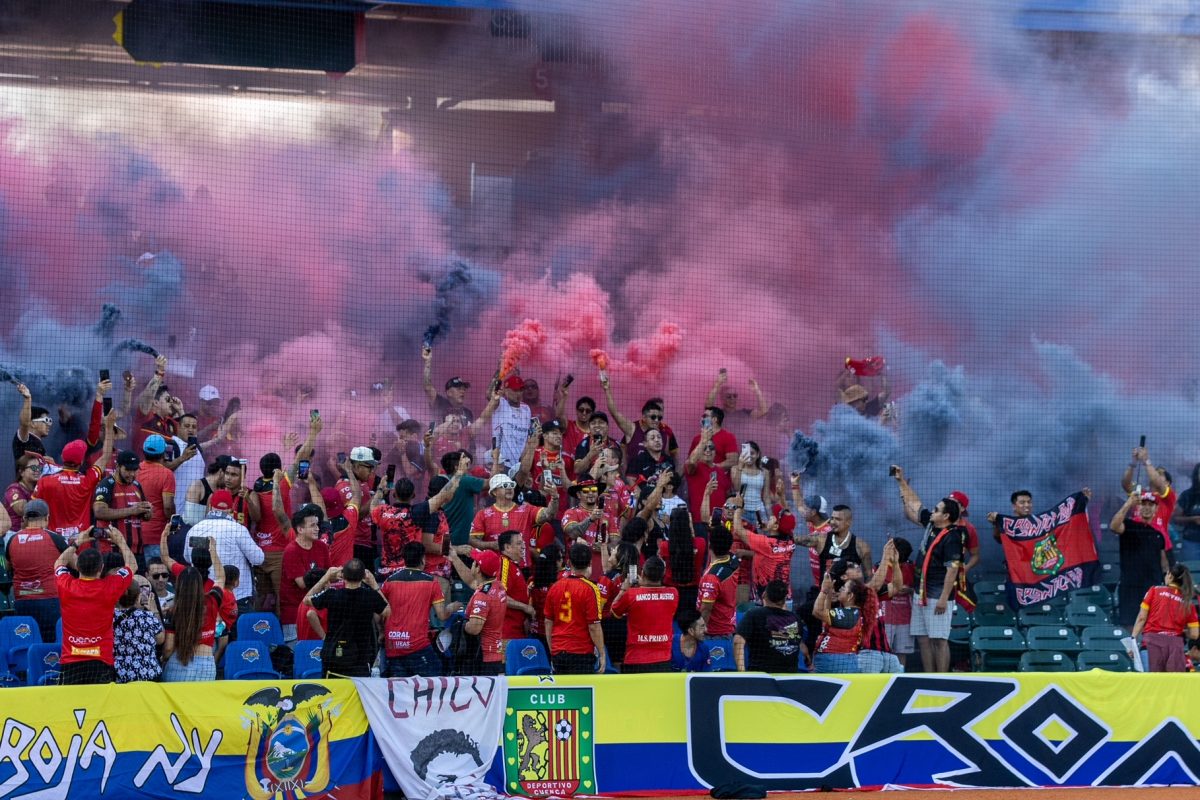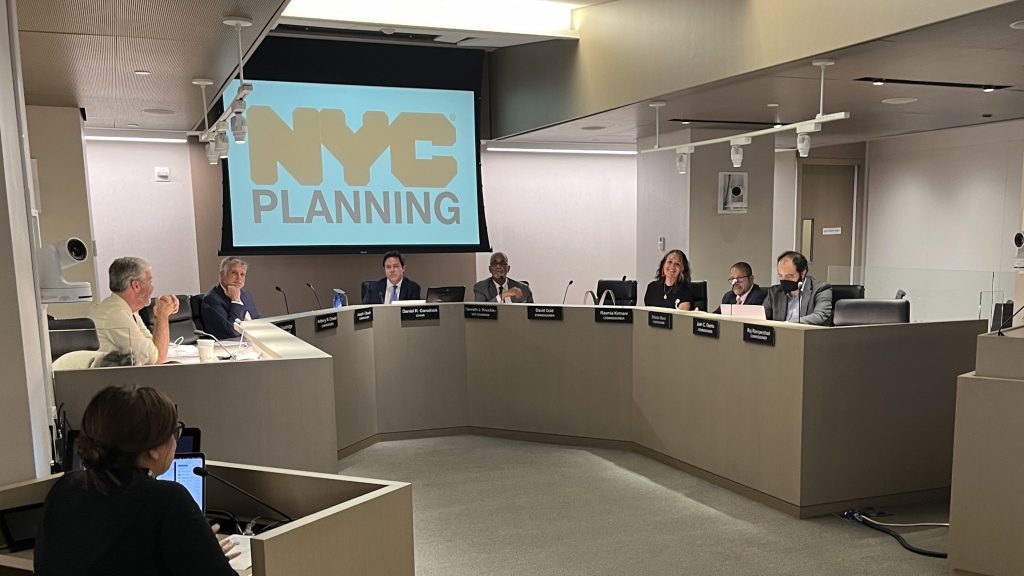Brooklyn Professional Soccer Team’s First Exhibition Match Electrifies Fans in 3-3 Draw Against Top Flight Ecuadorian Team
By Nicholas Gordon

Cuenca Fans at BKFC. Michael Mansfield
The vibrant atmosphere and packed stadium for the Brooklyn Football Club’s first official exhibition match on Saturday, July 13, at Maimonides Park in Coney Island made one thing abundantly clear: the borough of Brooklyn is hungry for professional soccer.
The exhibition match featured the Brooklyn FC Men’s Under-20 team versus the Ecuadorian Serie A Club C.D. Cuenca. As a prelude to the Brooklyn FC Women’s home opener in August in the inaugural USL Super League season and the Brooklyn Men’s FC launch in March of 2025, the end-to-end exhibition match offered the kind of excitement fans can anticipate with Brooklyn’s new professional soccer teams.
“I think this match goes to show how much talent lives in Brooklyn,” Brooklyn Football Club CEO Maximilian Mansfield said. “We were able to draw against a big-time professional team. It was quality soccer and it was fun to watch.”
Leaving a career in finance a few years back with a dream of creating his own football club, Mansfield has brought his vision to fruition with his two Brooklyn FC teams, grounding them in a European sensibility of “what a small town team can do for a community” that he learned while playing soccer in Germany in his youth.
“In Europe, the local teams are for the community, for the people, and with a lot of talent from that community. And I feel like we’ve accomplished that here too with the Brooklyn Football Clubs,” Mansfield said.

BKFC Players Celebrate Goal. Michael Mansfield
If watching soccer in a baseball stadium has slight angular challenges to viewership, the ebullient fans at the exhibition match at Maimonides Park were not phased by it. A constant chorus of cheering and chanting was accompanied by the visiting squad’s brass band that played the entire 90 minutes of the match as the teams on the pitch engaged in a dramatic back-and-forth battle, trading goals and leads throughout the second half.
While both teams created several goal-scoring chances in the first half, it was C.D. Cuenca who struck first with a goal on a powerful shot into the bottom left corner of the back of the net just before halftime. Brooklyn FC retaliated quickly with a goal on a similar strike just minutes into the second half. After that, the goals poured forth from both sides in an attacking seesaw match that C.D. Cuenca equalized on a penalty kick just before the final whistle sounded.
Calum Benjamin, Head of Strategy for Brooklyn FC, noted that the great match intensity on display at the exhibition will only ratchet up when the Brooklyn FC Women’s team soon takes the field for the start of the USL Super League.
“The fans coming out in droves, especially the Cuenca fans, added a lot of flavor here tonight,” Benjamin said. “It was a sneak preview of the football community and different fan bases that already exist in Brooklyn. And it shows what’s special about this borough and this city.”

BKFC Match Action II. Michael Mansfield
Just as the Brooklyn FC Men’s Under-20 team features players originally from more than ten different nations, including Algeria, Colombia, Congo, Greece, Guatemala, Poland, Nigeria, and Senegal, the Women’s Brooklyn FC team will have international and Brooklyn-based players with a range of different ethnicities.
For Benjamin and Mansfield who played soccer together in New York while growing up, Brooklyn FC reunites them as adults in a passion project that celebrates the diversity of their New York communities, as well as the growth of women’s sports.
“We’re excited to be part of the USL Super League that supports the growth of women’s soccer,” Mansfield said. “And we’re excited to be able to carry the torch for Brooklyn with the first ever women’s pro team in Brooklyn.”
More information on BKFC scheduling and tickets can be found at brooklynfootballclub.com and on social media @brooklynfootballclub.




